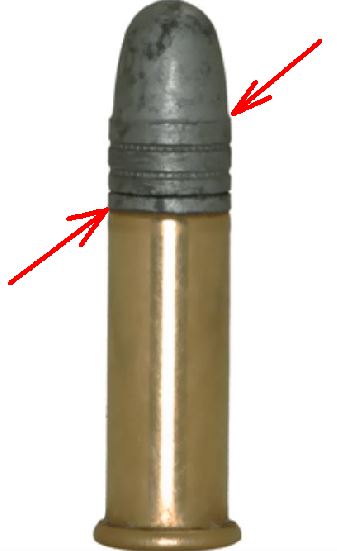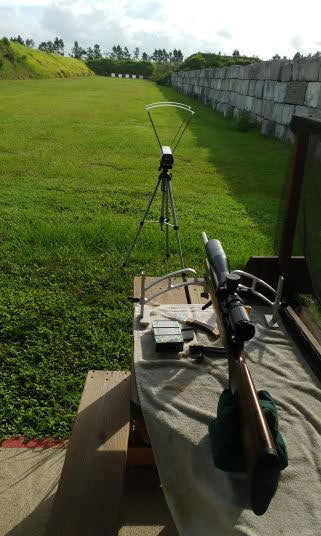A discussion by a group of old coots, over morning coffee, regarding visible cartridge defects,
and the question that came up was: Which defect caused the most trajectory dispersion?
We agreed the minor scratches and dings on the nose had little effect, but anything that affected
the drive bands was going to cause some serious wobbles. So the discussion moved to where
on the drive bands would the most trouble be produced, the shoulder, where the nose meets the drive band,
or the skirt, where the drive band touches the brass. Made for an interesting topic to argue about,
but no real answer other than "a damaged bullet heel is a bad thing".
So which location produces the worst results? Shoulder or skirt?

I just happen to have a new brick of Eley Action that's been producing decent results,
so I decided to take the time and try it for myself.
3 boxes of Eley Action, lot number 3117-300084.
CZ 455 Lilja, Sinclair bipod, chronograph out front

50 rounds fired as shipped, straight out of the box.

50 rounds fired with the shoulder shaved on one side.

50 rounds fired with a nick cut out at the skirt, just at the crimp.

The results including chronograph numbers.
The damage didn't produce any real difference in the mv's,
but the spread is visibly different from the as shipped results.

Any damage to the drive bands is a bad thing, but damage at the skirt
produces a major difference in trajectories. Explains why hand chambering cartridges
produces better results than magazine fed chambering.
Less chance of scraping the bullet on the lip of the chamber and damaging the drive bands.
and the question that came up was: Which defect caused the most trajectory dispersion?
We agreed the minor scratches and dings on the nose had little effect, but anything that affected
the drive bands was going to cause some serious wobbles. So the discussion moved to where
on the drive bands would the most trouble be produced, the shoulder, where the nose meets the drive band,
or the skirt, where the drive band touches the brass. Made for an interesting topic to argue about,
but no real answer other than "a damaged bullet heel is a bad thing".
So which location produces the worst results? Shoulder or skirt?

I just happen to have a new brick of Eley Action that's been producing decent results,
so I decided to take the time and try it for myself.
3 boxes of Eley Action, lot number 3117-300084.
CZ 455 Lilja, Sinclair bipod, chronograph out front
50 rounds fired as shipped, straight out of the box.
50 rounds fired with the shoulder shaved on one side.
50 rounds fired with a nick cut out at the skirt, just at the crimp.
The results including chronograph numbers.
The damage didn't produce any real difference in the mv's,
but the spread is visibly different from the as shipped results.
Any damage to the drive bands is a bad thing, but damage at the skirt
produces a major difference in trajectories. Explains why hand chambering cartridges
produces better results than magazine fed chambering.
Less chance of scraping the bullet on the lip of the chamber and damaging the drive bands.





